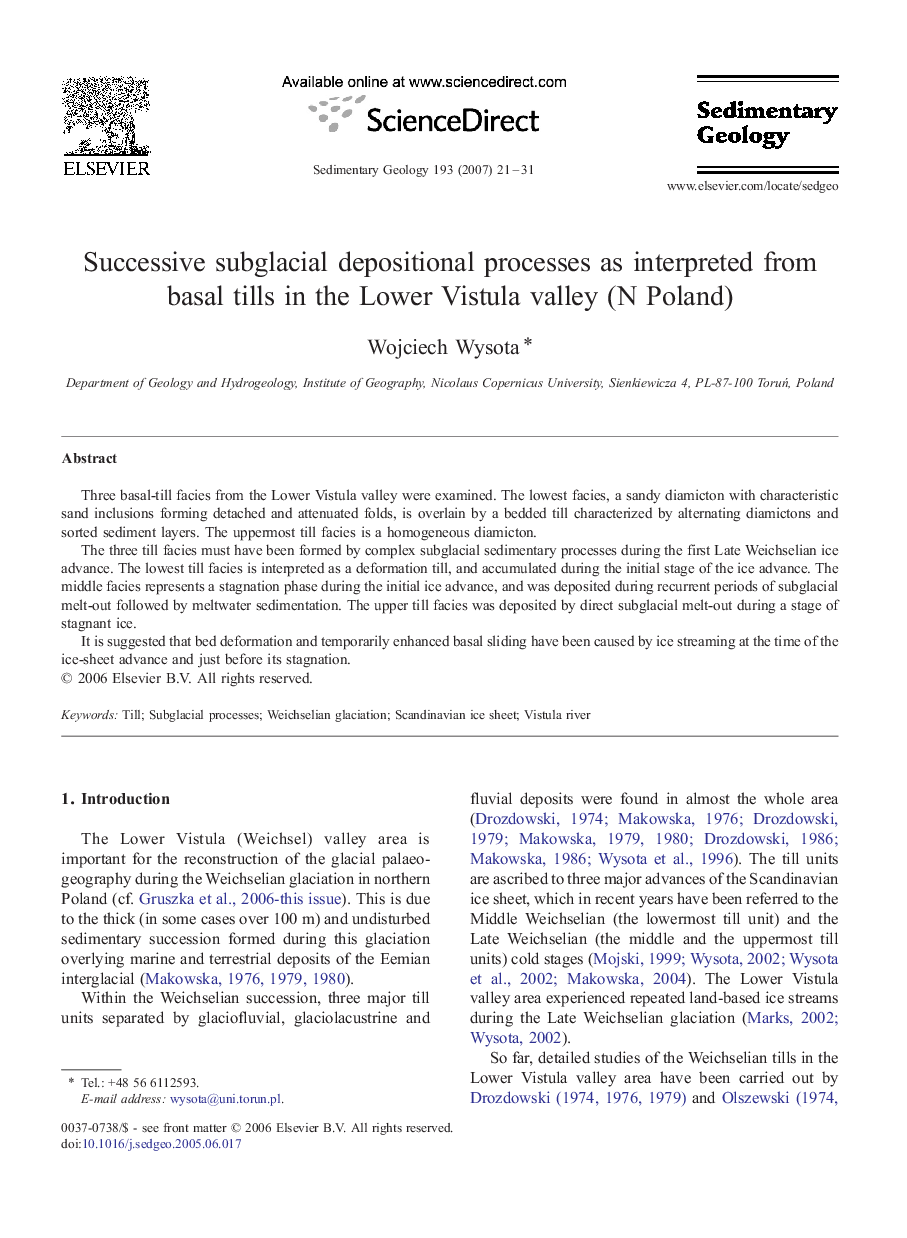| Article ID | Journal | Published Year | Pages | File Type |
|---|---|---|---|---|
| 4690849 | Sedimentary Geology | 2007 | 11 Pages |
Three basal-till facies from the Lower Vistula valley were examined. The lowest facies, a sandy diamicton with characteristic sand inclusions forming detached and attenuated folds, is overlain by a bedded till characterized by alternating diamictons and sorted sediment layers. The uppermost till facies is a homogeneous diamicton.The three till facies must have been formed by complex subglacial sedimentary processes during the first Late Weichselian ice advance. The lowest till facies is interpreted as a deformation till, and accumulated during the initial stage of the ice advance. The middle facies represents a stagnation phase during the initial ice advance, and was deposited during recurrent periods of subglacial melt-out followed by meltwater sedimentation. The upper till facies was deposited by direct subglacial melt-out during a stage of stagnant ice.It is suggested that bed deformation and temporarily enhanced basal sliding have been caused by ice streaming at the time of the ice-sheet advance and just before its stagnation.
